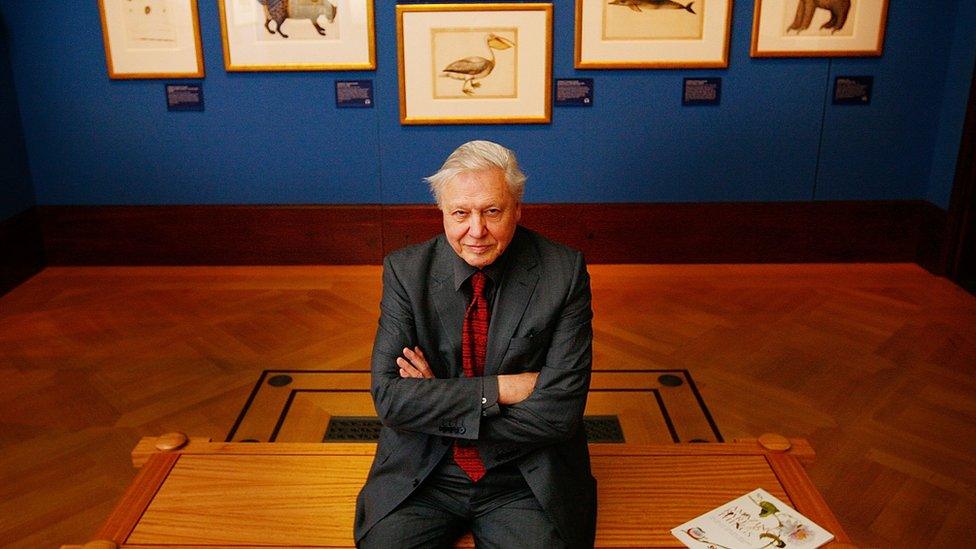In Pictures: Creatures named after Sir David Attenborough
- Published

Broadcaster and naturalist Sir David Attenborough has presented programmes highlighting topics such as the natural world and climate change for 70 years. He's inspired many people to take an interest in animals and conservation, so much so that many different creatures have been named in his honour. Let's take a look at some of them below..
A fossil of an odd bird, which was the first of its kind that had no teeth, was named Imparavis attenboroughi, which means "Attenborough's strange bird". The birds lived million years ago during the time of the dinosaurs.
This artwork shows a 560-million-year-old fossil of what's believed to be the earliest known creature with a skeleton and was found in Charnwood Forest near Leicester. It's been named Auroralumina attenboroughii, after Sir David, by the geologists who discovered it.
This 3D model shows a tiny fossil that was found preserved in ancient volcanic rock. Researchers have named it Cascolus Ravitis which is a combination of the Latin word for Attenborough (Cascolus) and the Roman word for Leicester (Ravitis) where David grew up.
Sir David spent many days hunting for fossils as a child so it makes sense that they named this pleiosaur Attenborosaurus conybeare after him. It is a type of animal that lived in the sea millions of years ago, at the same time as some dinosaurs.
A pygmy grasshopper species was named Electrotettix attenboroughi after Sir David. It was found in 2014 preserved in amber in the Dominican Republic in the Caribbean.
This beautiful butterfly was named Euptychia attenboroughi in honour of Sir David, who has a huge love of butterflies. They live in tropical forests in places like Colombia and Brazil and are very, very rare.
This little, flightless weevil from Indonesia was given the name Trigonopterus attenboroughii.
Here is a model of an armoured prehistoric fish, recreated from a fossil. It was found in the Gogo area of Western Australia and was named Materpiscis attenboroughi.
BONUS: Ok, it's not technically a 'creature'.... but this polar research ship was officially named the RRS Sir David Attenborough to honour Sir David's 90th birthday, despite the name "Boaty McBoatface" winning a public vote.
- Published6 May 2016
- Published22 March 2017
- Published21 January 2016
- Published21 January 2016
- Published26 October 2011
